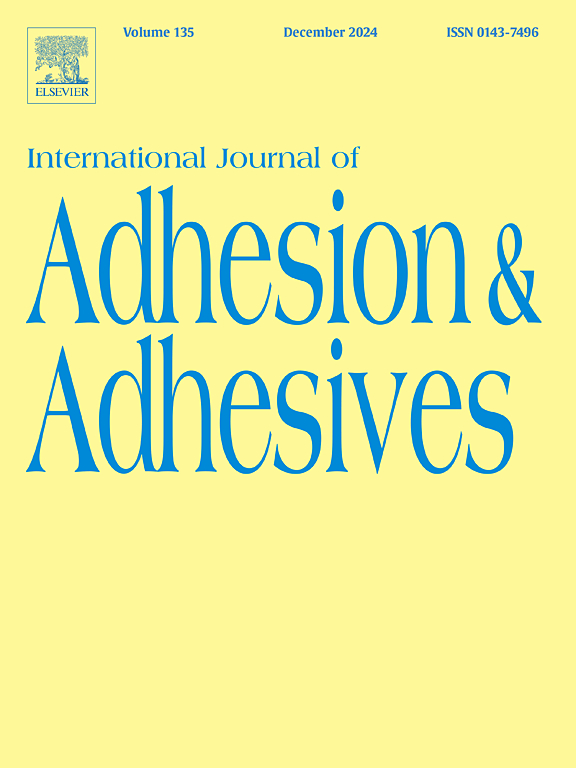A xylem fiber cell walls-inspired high-performance and multifunctional soy protein isolate adhesive with a double cross-linked strengthening network
IF 3.2
3区 材料科学
Q2 ENGINEERING, CHEMICAL
International Journal of Adhesion and Adhesives
Pub Date : 2024-12-19
DOI:10.1016/j.ijadhadh.2024.103928
引用次数: 0
Abstract
Soy protein isolate (SPI) adhesive, derived from a green and low-cost sustainable biomass resource, is as an excellent alternative for fossil-based adhesives. However, the weak water-resistant bonding strength and vulnerability to mildew have hindered its practical industrial applications. Herein, inspired by the relationship between the structures and mechanical properties in cell wall of wood xylem fibers, a double cross-linked strengthening network is designed to prepare SPI adhesive with high bonding performance and mildew resistance. Functionalized lignocellulose (TOLC) acting as a skeleton, covalent interaction with SPI enhances the structural stability of the adhesive, enabling it to withstand higher loads, and the water-resistant bonding performance reaches 1.45 ± 0.09 MPa. Sodium lignosulfonate (LS) as a binder can establish a sacrificial bonding network, which provides an effective energy dissipation mechanism for the adhesive and increases the toughness by 379.23 %; meanwhile, as a natural antibacterial agent, it can effectively improve the mildew-resistant performance of SPI adhesive (5 days without mildew). This novel strategy of producing tough, multifunctional and green biomass adhesives by constructing simple double cross-linked strengthening networks provides a practical way to achieve efficient utilization of waste resources and promote sustainable development.

求助全文
约1分钟内获得全文
求助全文
来源期刊

International Journal of Adhesion and Adhesives
工程技术-材料科学:综合
CiteScore
6.90
自引率
8.80%
发文量
200
审稿时长
8.3 months
期刊介绍:
The International Journal of Adhesion and Adhesives draws together the many aspects of the science and technology of adhesive materials, from fundamental research and development work to industrial applications. Subject areas covered include: interfacial interactions, surface chemistry, methods of testing, accumulation of test data on physical and mechanical properties, environmental effects, new adhesive materials, sealants, design of bonded joints, and manufacturing technology.
 求助内容:
求助内容: 应助结果提醒方式:
应助结果提醒方式:


